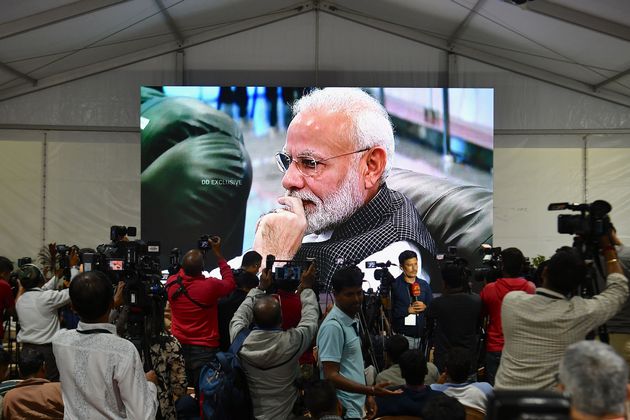India’s attempt to land a spacecraft on the moon appeared to end in failure this morning, after scientists lost contact with the vessel moments before it should have touched down.
The nation’s space agency said communication with the unmanned Vikram lunar lander had broken just two kilometres from the moon’s surface in the early hours of this morning.
“Communications from lander to ground station was lost,” said Kailasavadivoo Sivan, chairman of the Indian Space Research Organisation, who confirmed the agency was analysing data in order to determine what had happened.
A successful landing would have made India just the fourth country to land a vessel on the lunar surface, and only the third nation to operate a robotic rover there.
In a televised speech to the nation following the failed attempt, Indian Prime Minister Narendra Modi – who had travelled to the space centre to watch the planned landing – said: “For the last few hours, the entire nation was awake.
“We were awake in solidarity: in solidarity with our scientists who had embarked on one of the most ambitious missions of our space program. We came very close, but we will need to cover more ground in the times to come,” he added, apparently confirming that the unmanned craft had been lost.
Despite the disappointment, Modi encouraged India to look forward to “many more opportunities to be proud and rejoice… the best is yet to come,” and praised the “professionals who have given your best always and will give us several more opportunities to smile.”

Scientists could be seen with their heads in their hands as it became increasingly apparent that communication with the spacecraft, which had been designed to land on the south pole of the moon and deploy a rover to search for signs of water, had been lost.
The mission, which cost approximately £114million and had been named Chandrayaan-2, had been hailed by the space agency’s chairman as its “most complex mission ever”.
The mission lifted off on July 22 from the Satish Dhawan space centre, in Sriharikota, an island off the coast of the southern state of Andhra Pradesh.
Chandrayaan-2 spent several weeks making its way to the moon, ultimately entering lunar orbit on August 20.
On September 2, Vikram separated from the mission’s orbiter, and the lander began a series of braking manoeuvres to lower its orbit and ready itself for landing.